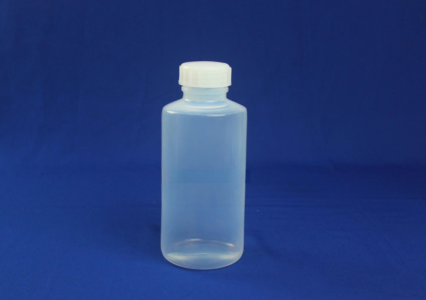DSPE-PEG-Biotin對循環中小細胞外囊泡的直接標記
鏈接:https://xueshu.baidu.com/usercenter/paper/show?paperid=111h0820k42y0re09m0a06a0rh159218&site=xueshu_se
作者:Yu, Zi-Li | Zhao, Yi | Miao, Fan | Wu, Min | Xia, Hou-Fu | Chen, Zhuo-Kun | Liu, Hai-Ming | Zhao, Yi-Fang | Chen, Gang
Circulating small extracellular vesicles (sEVs) are naturally occurring nanosized membrane vesicles that convey bioactive molecules between cells. Conventionally, to evaluate their behaviors in vivo, circulating sEVs have to be isolated from the bloodstream, then labeled with imaging materials in vitro, and finally injected back into the circulation of animals for subsequent detection. The tedious isolation-labeling-reinfusion procedures might have an undesirable influence on the natural properties of circulating sEVs, thereby changing their behaviors and the detected kinetics in vivo. Herein, we proposed an in situ biotinylation strategy to directly label circulating sEVs with intravenously injected DSPE-PEG-Biotin, aiming to evaluate the in vivo kinetics of circulating sEVs more biofriendly and accurately. Such an analysis strategy is free of isolation-labeling- reinfusion procedures and has no unfavorable influence on the natural behaviors of sEVs. The results showed that the lifetime of generic circulating sEVs in mice was around 3 days. Furthermore, w; for the first time, revealed the distinct in vivo kinetics of circulating sEV subpopulations with different cell sources, among which erythrocyte-derived sEVs showed the longest lifespan. Moreover, compared with circulating sEVs in situ or used as autograft, circulating sEVs used as allograft had the shortest lifetime. In addition, the in situ biotinylation strategy also provides a way for the enrichment of biotinylated circulating sEVs. In summary, this study provides a novel strategy for in situ labeling of circulating sEVs, which would facilitate the accurate characterization of their kinetics in vivo, thereby accelerating their future application as biomarkers and theranositic vectors.
譯文:
循環小細胞外囊泡(sEVs)是天然存在的納米級膜囊泡,在細胞之間傳遞生物活性分子。傳統上,為了評估它們在體內的行為,循環的sEV必須從血液中分離出來,然后在體外用成像材料標記,最后注射回動物的循環中進行后續檢測。繁瑣的分離標記再融合程序可能會對循環sEV的自然性質產生不利影響,從而改變它們的行為和體內檢測到的動力學。在此,我們提出了一種原位生物素化策略,用靜脈注射的DSPE-PEG生物素直接標記循環sEV,旨在更生物友好和準確地評估循環sEV的體內動力學。這種分析策略沒有隔離標記-再融合程序,對sEV的自然行為沒有不利影響。結果顯示,小鼠中通用循環sEV的壽命約為3天。此外,w;首次揭示了不同細胞來源的循環sEV亞群的不同體內動力學,其中紅細胞來源的sEV壽命最長。此外,與原位循環sEVs或用作自體移植相比,用作同種異體移植的循環sEVs的壽命最短。此外,原位生物素化策略還為生物素化循環sEVs的富集提供了一種方法。總之,本研究為循環sEV的原位標記提供了一種新策略,這將有助于準確表征其體內動力學,從而加速其作為生物標志物和*載體的未來應用。
DOI:10.1021/acs.analchem.1c01176

西安齊岳生物提供相關產品:
m-PEG-DSPE
m-PEG8-DSPE
m-PEG8-DSPE
m-PEG12-DSPE
m-PEG24-DSPE
mPEG-CLS
mPEG-DEPE
mPEG-DLPE
mPEG-DMPE
mPEG-DOPE
mPEG-DPPE
mPEG-DSPE
mPEG-DSPE CAS No.: 147867-65-0
mPEG-DSPE(ammonium salt)
以上文章內容來源各類期刊或文獻,如有侵權請聯系我們刪除!




 齊岳微信公眾號
齊岳微信公眾號 官方微信
官方微信 庫存查詢
庫存查詢